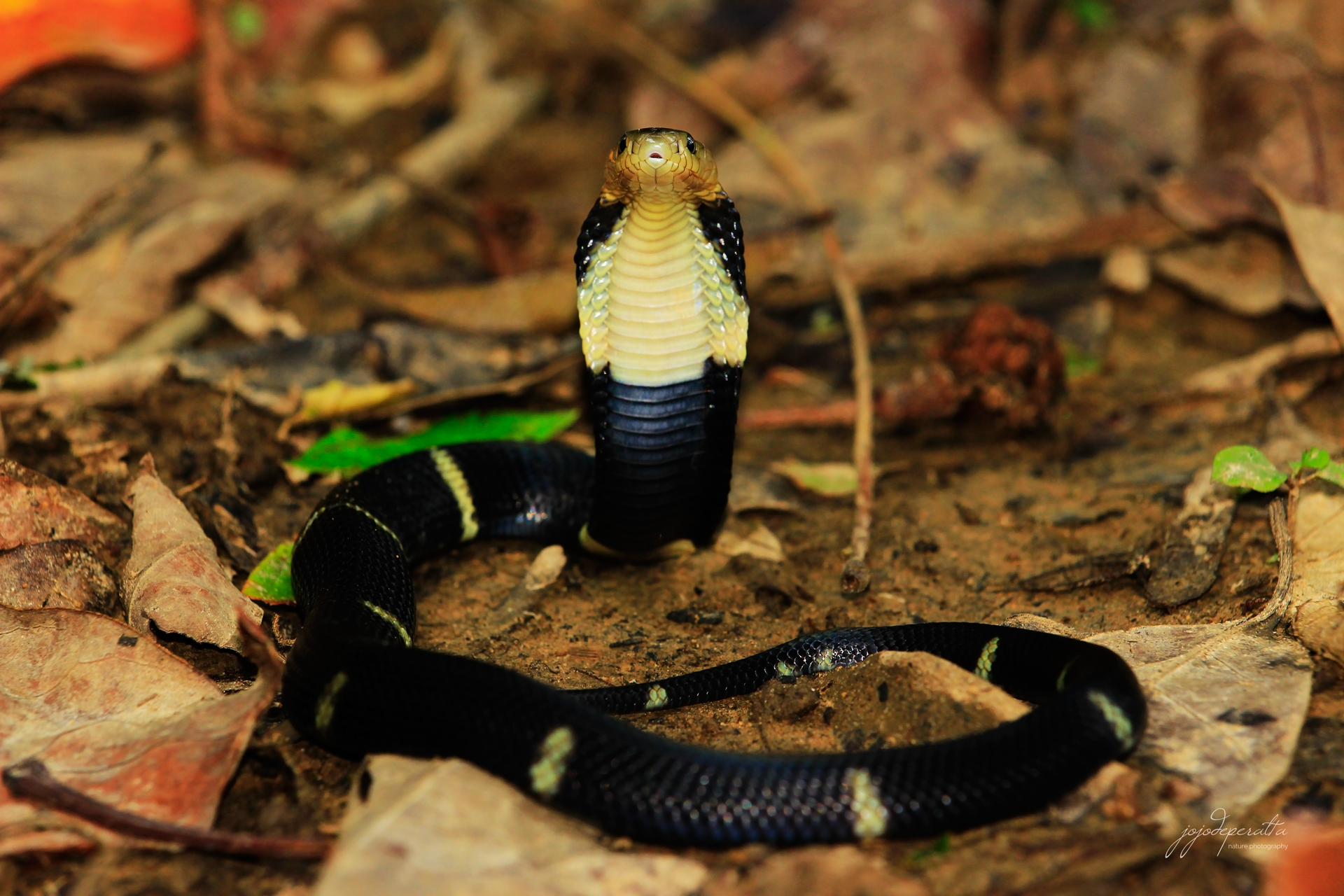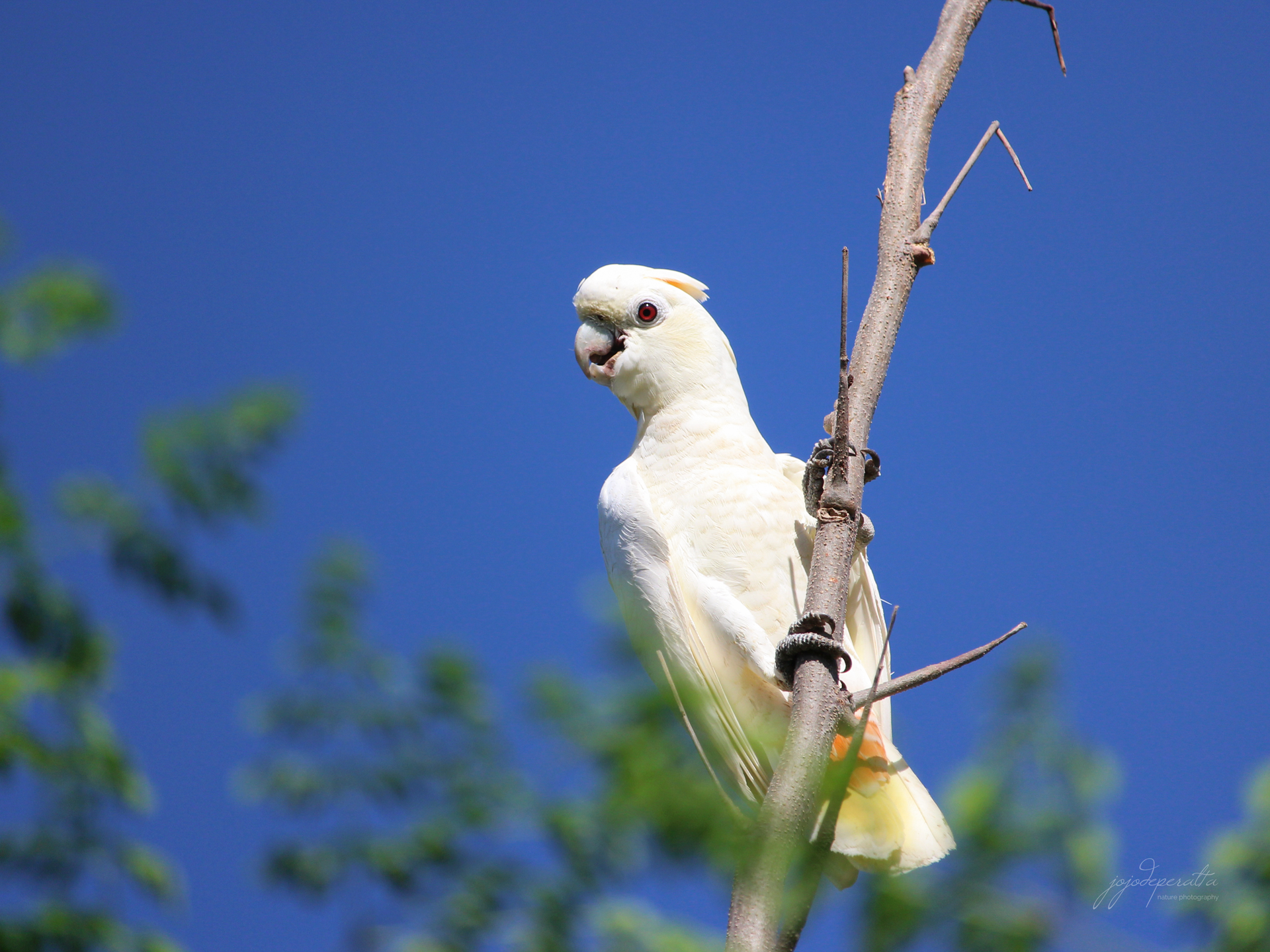The Palawan Spitting Cobra (Naja sumatrana miolepis) is a spitting cobra that can be found in Palawan. This species is a medium sized, ground dwelling venomous snake. The scales are smooth and unlike some of the most beautiful cobras in Asia, this species has no impressive hood marks. The head is elliptical and depressed, the eyes are medium in size with round pupils, the snout is rounded and the nostrils are large. Juveniles tend to be of different colour than the adult. They can grow up to around 1.5 meters, but spitting cobras over a meter in length are seldom seen and photographed in Palawan.
 |
| Palawan Spitting Cobra hood mark |
It can be seen resting during the day under heavy thickets of grass, stacks of woods and cavities under rocks or soil. Abandoned mice dens are favorite hideouts in grasslands, farms and rice fields. Although it usually hunts for food at night, this species can be seen moving around on the forest floor at sporadic times during the day. Locals and hikers often encountered adult cobras sun-basking on the trail usually early in the morning or late in the afternoon after long days of rains.
 |
Palawan Spitting Cobra
|
It is commonly seen in farms and grasslands around coastal areas to second growth forest with elevation of around 300 meters above sea level, up to secondary and primary tropical forests with the elevation of around 500 meters above sea level. It is rarely seen in elevations higher than 700 masl and I have not seen one or heard anyone in Palawan who found this species in elevation more than 1000 masl even if there's plenty of food around.
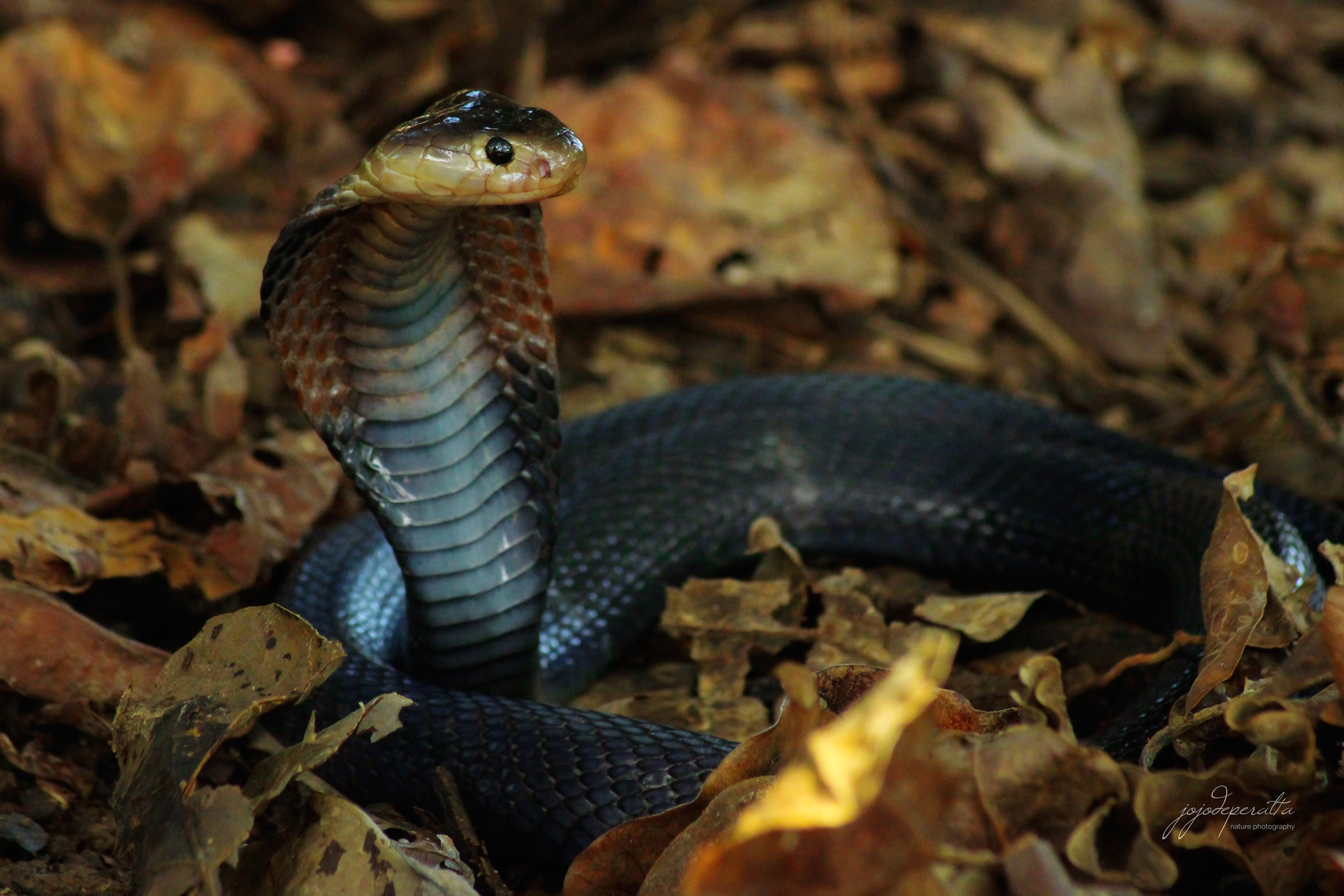 |
Palawan Spitting Cobra
|
I also read somewhere that here in the Philippines, this snake is harvested for food and for use in traditional medicine. They're probably talking about a certain tribe in Northern Luzon and a different cobra species. The N. sumatrana miolepis in Philippines only occurs in Palawan and I do not know any local in Palawan who serves fried black spitting cobra for breakfast. I am also familiar with all the tribes in Palawan and still spend days exploring in the mountains with them from time to time. I never saw one preparing cobra meat for food or medicine. Pythons, yes. Cobras, no.
 |
Palawan Spitting Cobra
|
The Palawan Spitting Cobra is the most commonly encountered venomous snake on the lowland plains and it has the highest bite ratio among all venomous snakes in Palawan. This species is often encountered around plantations and rice fields where it hunts for mice and frogs. Farmers working in rice fields at night fear for their safety and often kill this snake on sight. There's no antivenin for cobra bites in Palawan. Most cobra bite victims here survived, but there were some who were unlucky. I personally knew two people who died after getting bitten by this snake. The latest was an aunt of one of my hiking companion. She accidentally stepped on an adult spitting cobra while walking home late at night. She died after three days.
 |
Palawan Spitting Cobra
|
This snake is also known to enter human dwellings when hunting rodents or trying to get away from heavy rains. I had an unforgettable experience about it in my early teens inside our dark kitchen. I went for a glass of water but before I could press the light switch, there were loud, angry hissing on the floor. I panicked and screamed for help while trying to keep both my legs up from the floor to avoid being bitten. That’s what my father saw when he arrived to investigate what the ruckus was all about, me screaming and jumping around in that dark kitchen and the cobra hissing on the floor.
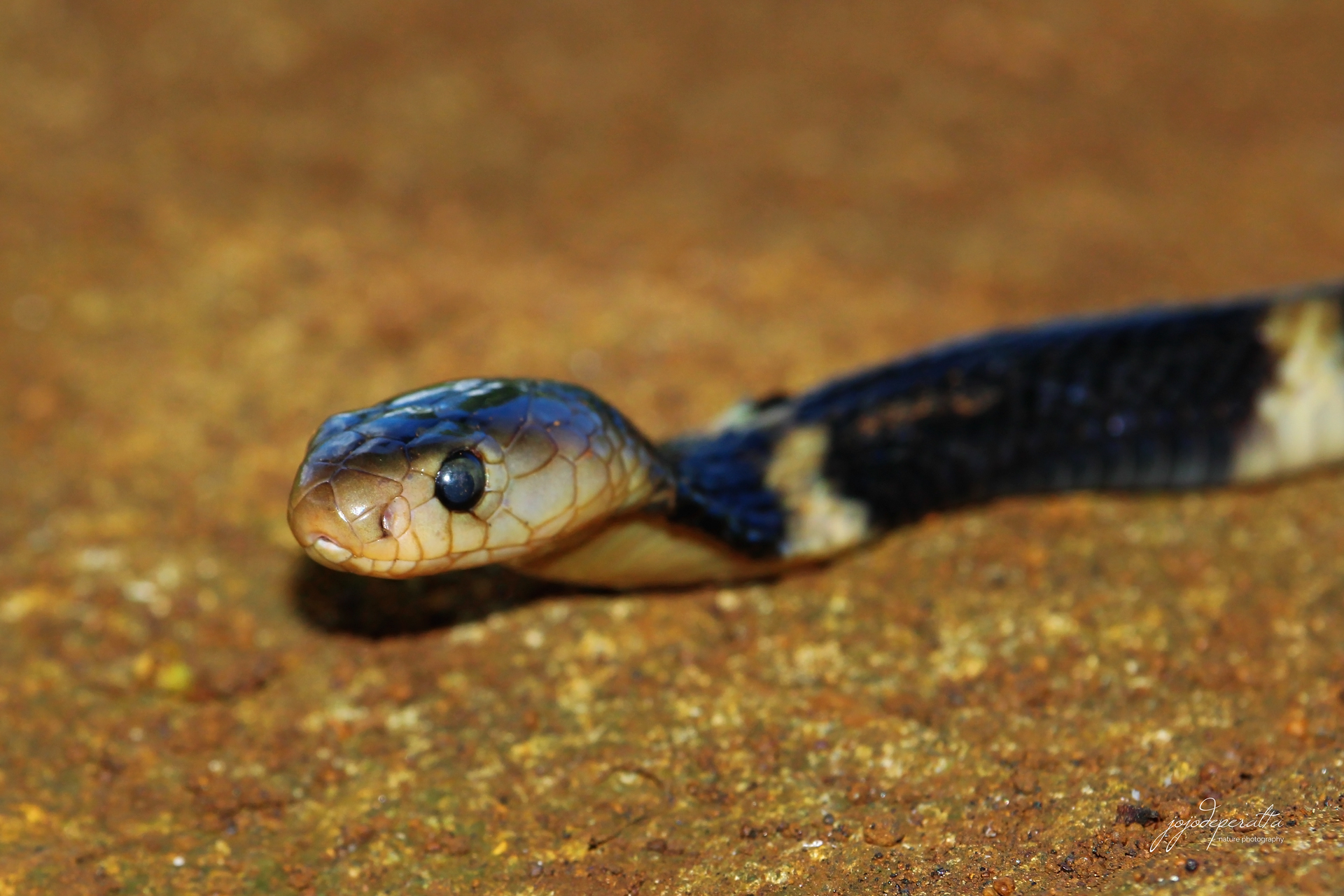 |
Juvenile Palawan Spitting Cobra
|
I used to be terrified of this snake. It was only when I started photographing wildlife when I truly understood this creature. I also learned that what I did in that kitchen long ago was the worst thing to do when facing an angry spitting cobra. The noise vibrating inside that small kitchen and all that movements will make the snake more agitated and it is more than enough to trigger an attack. In the past few years, I faced several angry spitting cobras in the wild. I sometimes photographed them at eye level, well within the spitting and striking distance. There’s no special technique about it. I just shut my mouth and moved very, very slow. I never got bitten. I found it more difficult to photograph an angry pit viper of the genus Tropidilaemus than an angry spitting cobra. An angry spitting cobra will stand on its belly, flare its hood and hiss loudly, but it will usually choose a way out if there is any than strike as long as you don’t touch it, make sudden movements and give it enough space to flee.
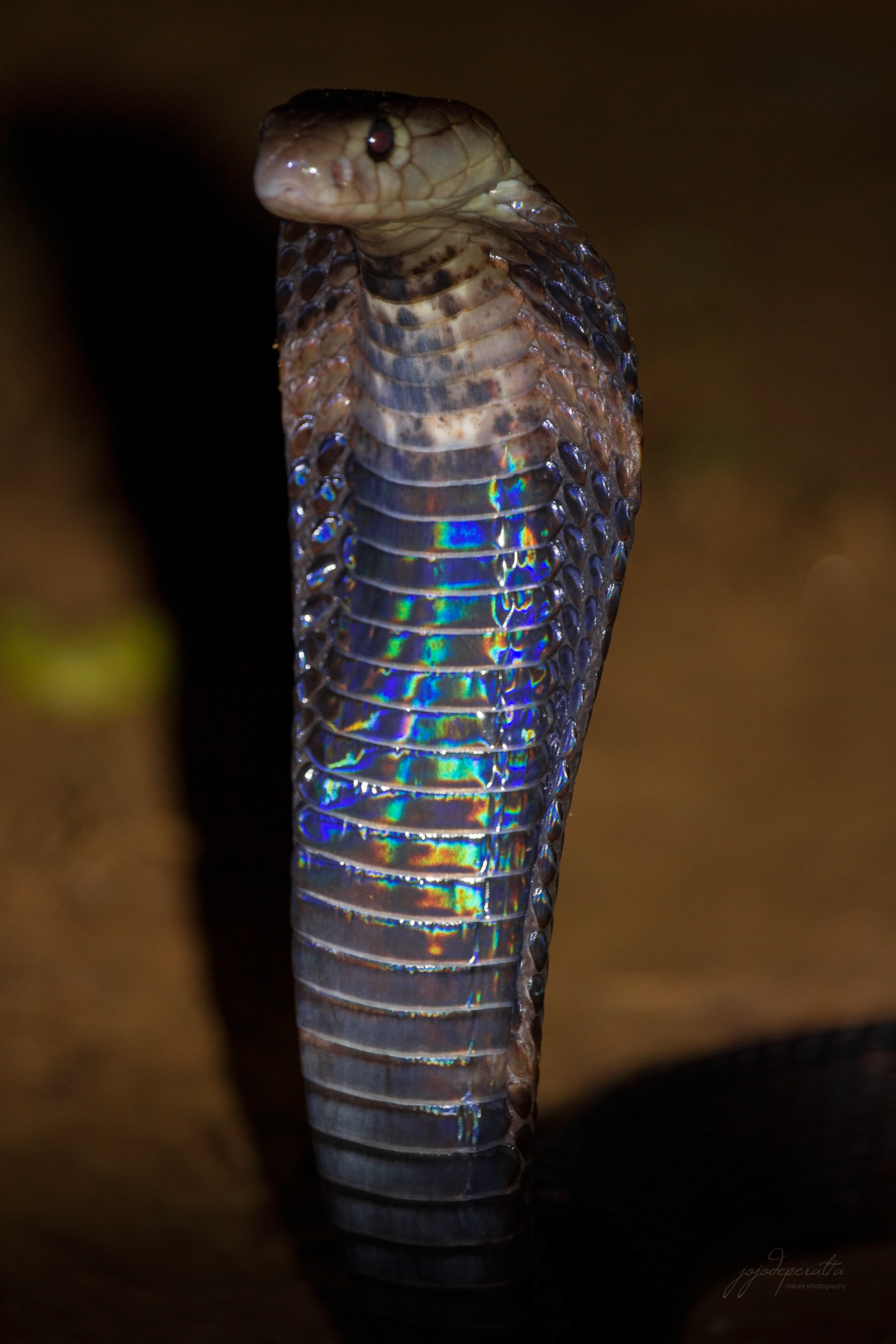 |
Palawan Spitting Cobra
|
The Palawan Spitting Cobra is another amazing creature in Palawan that has a high degree of tolerance to habitat modification. If only the locals could understand its behavior, its importance in nature and its benefit in regulating pests in farms and rice fields, the Palawan Spitting Cobra will continue to exist and roam in the wild for a long time to come.







